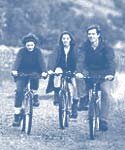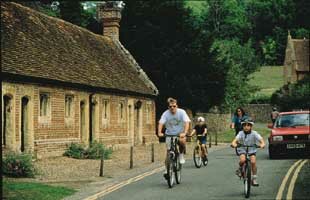 Welcome to all new and leisure cyclists
Welcome to all new and leisure cyclists
Yes, welcome to the section of the site given over to the provision of advice and information for the new, returning, family or leisure cyclist.
Within this section our objective is to provide you with an introduction to the terminology and numerous different elements of this fantastic sport, pastime or method of commuting all tied up with the bicycle.
We have attempted to provide information covering most areas of cycling and as your experience and involvement with cycling becomes more indepth, or you want to do some training for a ride or tour, you can then move on to the Tour and Racing section where again you will find indepth information covering most aspects of the subject.
If ever you don't find what you are looking for, contact us. We will then either add a specific section to the site or answer you question directly.
Have fun.
An example of the section content.
You're safer on a bike than in a car. Hour for hour, your chances of an accident are much less. But that doesn't make you invincible. Any mishap is likely to leave you worse off than whoever else is involved. Consider wearing a cycle helmet but please do not think that a helmet makes you indestructable.
 If you are new to cycling, make sure you practice riding your bike before venturing out into major traffic. Practice in a quiet place and ensure you have full control of your bike, know how the gears work and accustom yourself to your brakes. You should be able to ride in a straight line, look behind and signal, all without wobbling, (and whilst chewing gum). Drivers have little patience with cyclists, you may have noticed.
If you are new to cycling, make sure you practice riding your bike before venturing out into major traffic. Practice in a quiet place and ensure you have full control of your bike, know how the gears work and accustom yourself to your brakes. You should be able to ride in a straight line, look behind and signal, all without wobbling, (and whilst chewing gum). Drivers have little patience with cyclists, you may have noticed.
Read and understand the Highway Code. You are a vehicle with obligations like any other. You also have as much right to be on the road as other users!
Try planning your routes by using as many quiet, residential roads, cycle lanes and paths as possible. Try to use park, canal and river paths and bridleways but keep away from footpaths - bikes aren't allowed.
One of the first rules of safety on the roads is be seen - wear bright clothing (and consider wearing a helmet). Always have at least one reflector on your bike. The best place for reflectors is on the back of your pedals. The up and down of the pedals is very noticeable to motorists.